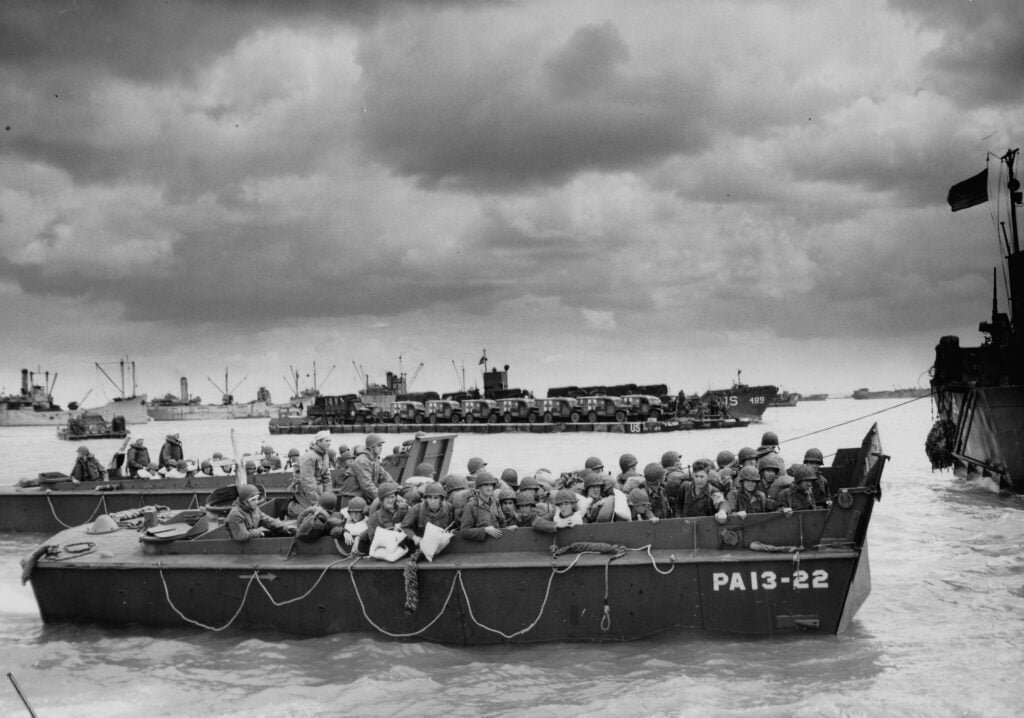The Landing Craft, Vehicle, Personnel was an alternative solution to the same problem that the LCA aimed to meet: how to land a relatively small group of troops on an enemy shore. It was commonly referred to as the ‘Higgins Boat’ after its designer and builder, Andrew Higgins of New Orleans.

Above: A pair of US Coast Guard-crewed LCVPs from APA-13 USS Joseph T Dickman, loaded with troops. Dickman carried 31 LCVPs on D-Day, plus several other small craft, and landed troops at Utah Beach. A Rhino ferry loaded with ambulances is in the middle distance. (Photo: Conseil Régional de Basse-Normandie / US National Archives)
The ‘V’ part of LCVP indicated that the craft could carry a light vehicle such as a three-ton lorry. The LCVP’s engine had more power than those of an LCA, and the coxswain could operate them directly rather than (on the LCA) sending signals to a second crewman who controlled them. The craft did however require skill to handle, and was vulnerable to being swamped at the beach when the ramp was lowered. The LCVP had greater draught than the LCA so troops typically had to wade ashore through deeper water.
The Landing Craft, Vehicle, Personnel was fitted with armour on its sides and the ramp provided protection against small arms fire, though it had less armour than the LCA. LCVPs used in the assault sometimes carried two .30-inch machine guns on the rear of the craft, which could be fired in support of the troops as they landed. Some assault craft were not equipped with these guns as commanders feared that indiscriminate firing by the crew posed a risk to Allied troops.
It is probably often overlooked that many of the LCVPs used at Normandy were crewed by Royal Navy and Royal Marine personnel of the Build Up Flotillas. They arrived off Normandy late on D-Day or on subsequent days, to help unload larger ships.
Sources for more information:
Adcock, Al, WWII US Landing Craft in Action. Warships No.17. (Carrollton, TX: Squadron/Signal, 2003)
Doyle, David, US Landing Craft of WWII, Vol.1. The LCP(L), LCP(R), LCV, LCVP, LCS(L), LCM and LCI. (Atglen, PA: Schiffer, 2019)